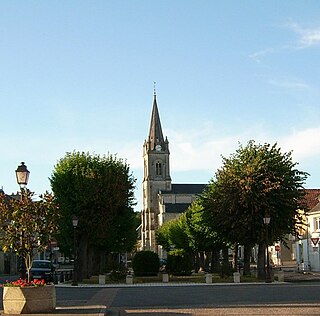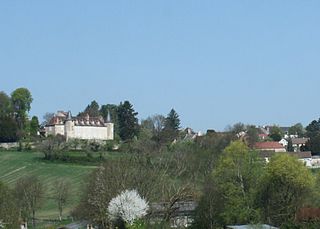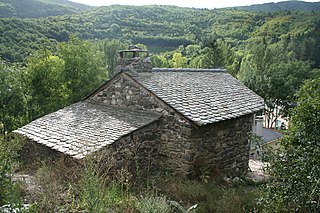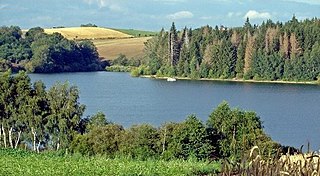
Indre ; is a department in central France named after the river Indre. The inhabitants of the department are known as the Indriens and Indriennes. Indre is part of the current administrative region of Centre-Val de Loire. The region is bordered by the departments of Indre-et-Loire to the west, Loir-et-Cher to the north, Cher to the east, Creuse and Haute-Vienne to the south, and Vienne to the southwest. The préfecture (capital) is Châteauroux and there are three subpréfectures at Le Blanc, La Châtre and Issoudun. It had a population of 219,316 in 2019. It also contains the geographic centre of Metropolitan France.

Haute-Vienne is a département in the Nouvelle-Aquitaine region in southwest-central France. Named after the Vienne River, it is one of the twelve départements that together constitute Nouvelle-Aquitaine. The prefecture and largest city in the department is Limoges, the other towns in the department each having fewer than twenty thousand inhabitants. Haute-Vienne had a population of 372,359 in 2019.

Yzeures-sur-Creuse is a commune in the department of Indre-et-Loire, Centre-Val de Loire, France.

Saint-Gérard-le-Puy is a commune in the Allier department in Auvergne-Rhône-Alpes in central France.

The arrondissement of Montmorillon is an arrondissement of France in the Vienne department in the Nouvelle-Aquitaine region. It has 90 communes. Its population is 67,025 (2016), and its area is 2,876.1 km2 (1,110.5 sq mi).

The arrondissement of Poitiers is an arrondissement of France in the Vienne department in the Nouvelle-Aquitaine region. It has 83 communes. Its population is 259,699 (2016), and its area is 2,131.5 km2 (823.0 sq mi).

Ardoix is a commune in the Ardèche department in the Auvergne-Rhône-Alpes region of southern France.

Alboussière is a commune in the Ardèche department in the Auvergne-Rhône-Alpes region in Southern France.

Barbaira is a commune in the Aude department in the Occitanie region of southern France.

Aguessac is a commune in the Aveyron department in the Occitanie region of southern France.

Ambeyrac is a commune in the Aveyron department in the Occitanie region of southern France.

Arnac-sur-Dourdou is a commune in the Aveyron department in the Occitanie region of southern France.

Arvieu is a commune in the Aveyron department in the Occitanie region of southern France.

Auriac-Lagast is a commune in the Aveyron department in the Occitanie region of southern France.

Les Adjots is a commune in the Charente department in the Nouvelle-Aquitaine region of southwestern France.

Alloue is a commune in the Charente department in the Nouvelle-Aquitaine region of southwestern France.

Aulnay, commonly referred to as Aulnay-de-Saintonge, is a commune in the Charente-Maritime department, region of Nouvelle-Aquitaine, France.

Saint-Martin-l'Ars is a commune in the Vienne department and Nouvelle-Aquitaine region of western France.

Vienne is a landlocked department in the French region of Nouvelle-Aquitaine. It takes its name from the river Vienne. It had a population of 438,435 in 2019.
Grand Poitiers is the communauté urbaine, an intercommunal structure, centred on the city of Poitiers. It is located in the Vienne department, in the Nouvelle-Aquitaine region, western France. It was created on 1 January 2017 as a communauté d'agglomération and transformed into a communauté urbaine on 1 July 2017. Its area is 1064.7 km2. Its population was 196,530 in 2020, of which 90,033 in Poitiers proper.
























